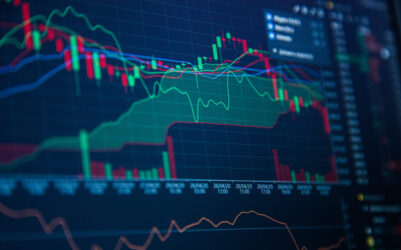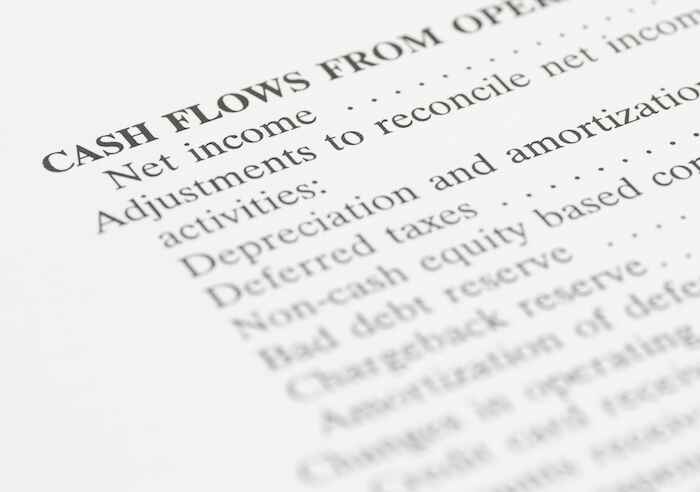The Secret to Maximum Reward and Minimum Risk
Marc Lichtenfeld|August 3, 2022

Editor’s Note: If you have stocks that are down 15%, 20%, 30% or more… we have great news to share…
Our good friend Marc Lichtenfeld from The Oxford Club has found a way to 6X your money in just one month by harnessing tiny but potent “micro-bounces” in falling stocks.
And right now, Marc’s holding a FREE training that he calls Project 9. In Project 9, Marc will show you exactly how to use his micro-bounce chart pattern.
The training is entirely free. All you need to do is register to attend.
Simply click here, enter your email address, and choose the time and date when you’d like to take Marc’s exclusive Project 9 training.
The letters and numbers were flying past me as traders shouted at me to execute their orders.
How were these guys making sense out of the seemingly random price action coming across their screens?
I was a newly minted assistant on the trading desk, and my job was to watch the markets, execute trades on behalf of traders and alert them to any trends that I saw.
The first two tasks were no problem. But I had a tough time seeing how those moving prices on my screen could be interpreted and lead to a decision to buy or sell stock.
I’d like to tell you that after a lot of studying and hard work, I finally got it. But I’d be lying. A year later, I was as clueless as I was on my first morning.
And then one day, a trader showed up on the desk with a new data source. And when he hit “3” on the keyboard, a stock’s chart came up. He quickly toggled between a daily chart, an hourly chart and a five-minute chart.
I was enthralled. I peppered him with questions: “What does that mean? How do you know when to buy or sell?”
Without looking up from his charts, he snapped, “Go learn some technical analysis and then come back to me.”
Technical analysis? I had no idea what he was talking about. There was no Google back then. So I spent that weekend at the library devouring everything I could find on technical analysis – the study of stock charts (or charts of other financial instruments).
I enrolled in a class on technical analysis at a local university, and I was hooked.
Maximal Profit, Minimal Risk
All those random numbers I saw on my screens could be used to create a chart that would show patterns, trends and even price targets.
Importantly, I learned that those charts are visual representations of human emotion – greed and fear. And those emotions repeat in patterns and are somewhat predictable.
I became obsessed with improving my skills. I was fortunate that I had access to some of the most legendary technical analysts in the world. It was like discovering a love of baseball and speaking to Babe Ruth, Ted Williams and Ken Griffey Jr. every week.
At firstAt first, I thought I’d found a crystal ball that would lead me to riches. But what these legends taught me, and what my hours and hours of study showed me, is that charts are not foolproof.
But they are very good at revealing patterns and helping traders find the points of maximum reward and minimum risk.
For example, here’s a chart of Alibaba Group Holding (BABA).

You can see that starting in late March 2020, the stock began to move higher. Let’s say that in June 2020, you were looking for a good entry point.
If you drew a trend line, which is a straight line connecting the lows of the stock, you’d see that it would be best to buy the stock when it came down to the trend line because, in the past, it had bounced off that area of support.
(Support is a price level where investors and traders come in and buy the stock, “supporting” it.)
If you had waited until the stock came back down to its trend line, you would have done well…
You’d have bought it at around $210 and ridden it higher for months, as the stock didn’t break the trend line until November 2020.
More importantly, you’d have lowered your risk using this technique.
Here’s why…
Sign of the Times
When a stock breaks a trend line or other support, that is a sign that the psychology around the stock has changed.
For whatever reason, when the stock previously came down to the trend line, buyers jumped in. When it breaks the trend line, it’s a sign that buyers are no longer coming to the rescue.
We don’t necessarily know if it’s because the company’s earnings are down, the CEO was arrested or a new competitor emerged – and, to be honest, we don’t care. We just know that the psychology of investors has changed and we need to think about getting out.
Take a look at the chart above again. Let’s say that in October 2020, you were interested in Alibaba. You could have bought it at $310 and then watched it fall all the way to $250, taking a sizable loss.
If you instead waited for the stock to come back down to the trend line, you could have bought it at $270. Then the stock did in fact break the trend line, signaling that the uptrend that had been in effect since March was over. That was a sell signal, and you’d have gotten out with a small loss instead of a large one.
This is just a very simple example. There are many, many ways to use technical analysis.
Using charts and technical analysis increases the likelihood and size of your profits while decreasing the likelihood and size of your losses.
If you can master just a few simple chart patterns, you can produce results that are unthinkable for most investors.
That’s why I’m excited to unveil a new, powerful chart pattern that I call Project 9…
Using it is as easy as counting to nine. It harnesses tiny but potent “micro-bounces” in falling stocks.
In fact, I’ve put together a new investment series for you. I’ve prepared a special, free presentation where I explain this pattern.
And I’m so confident in Project 9 that – for the FIRST TIME ever – I will be making trades with my own money alongside subscribers.
Click here to trade alongside me using Project 9.
Twenty-three years ago, I was told, “Go learn some technical analysis.” I’m still studying it every day. I can’t imagine making a trade without it.






